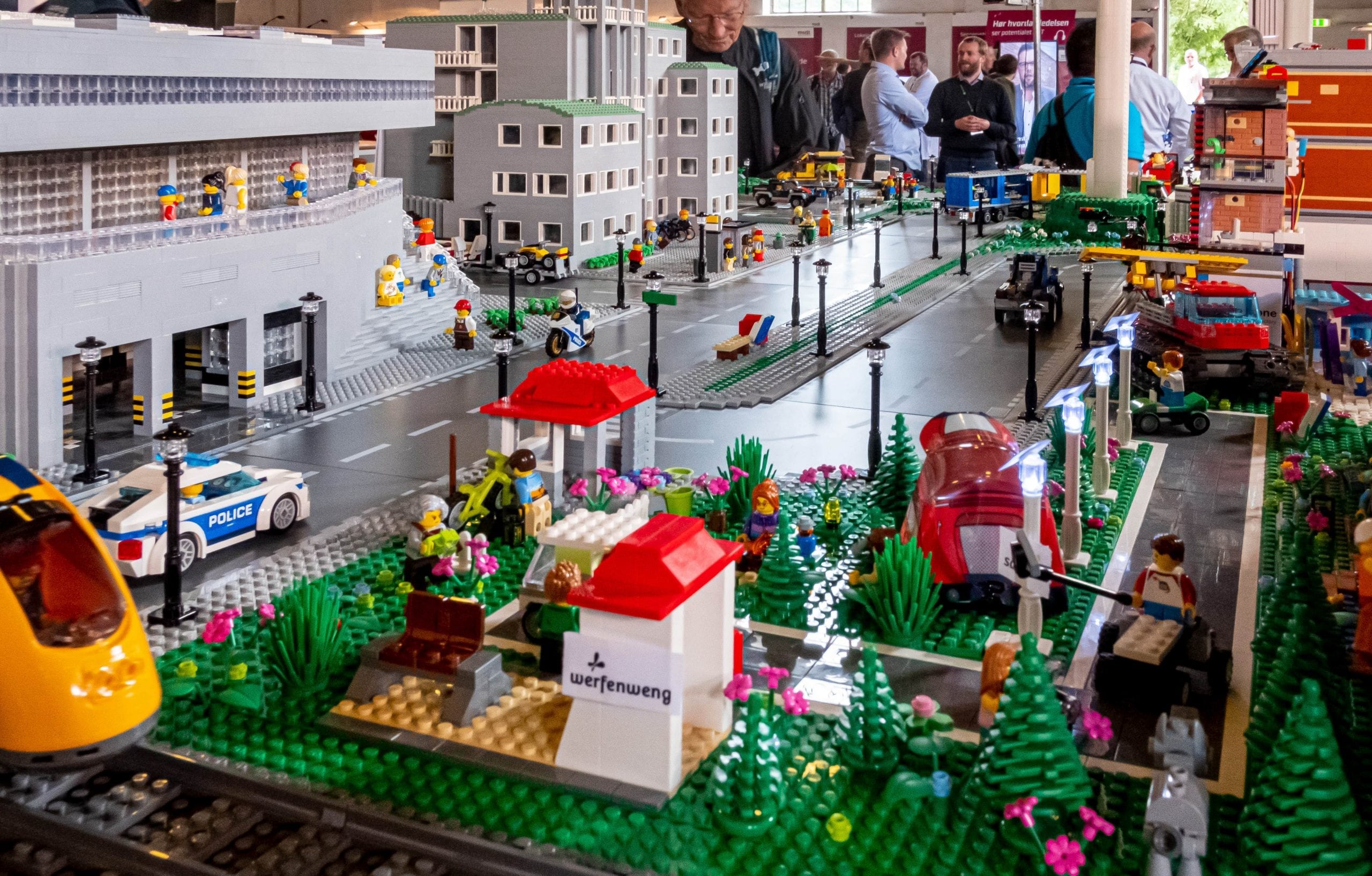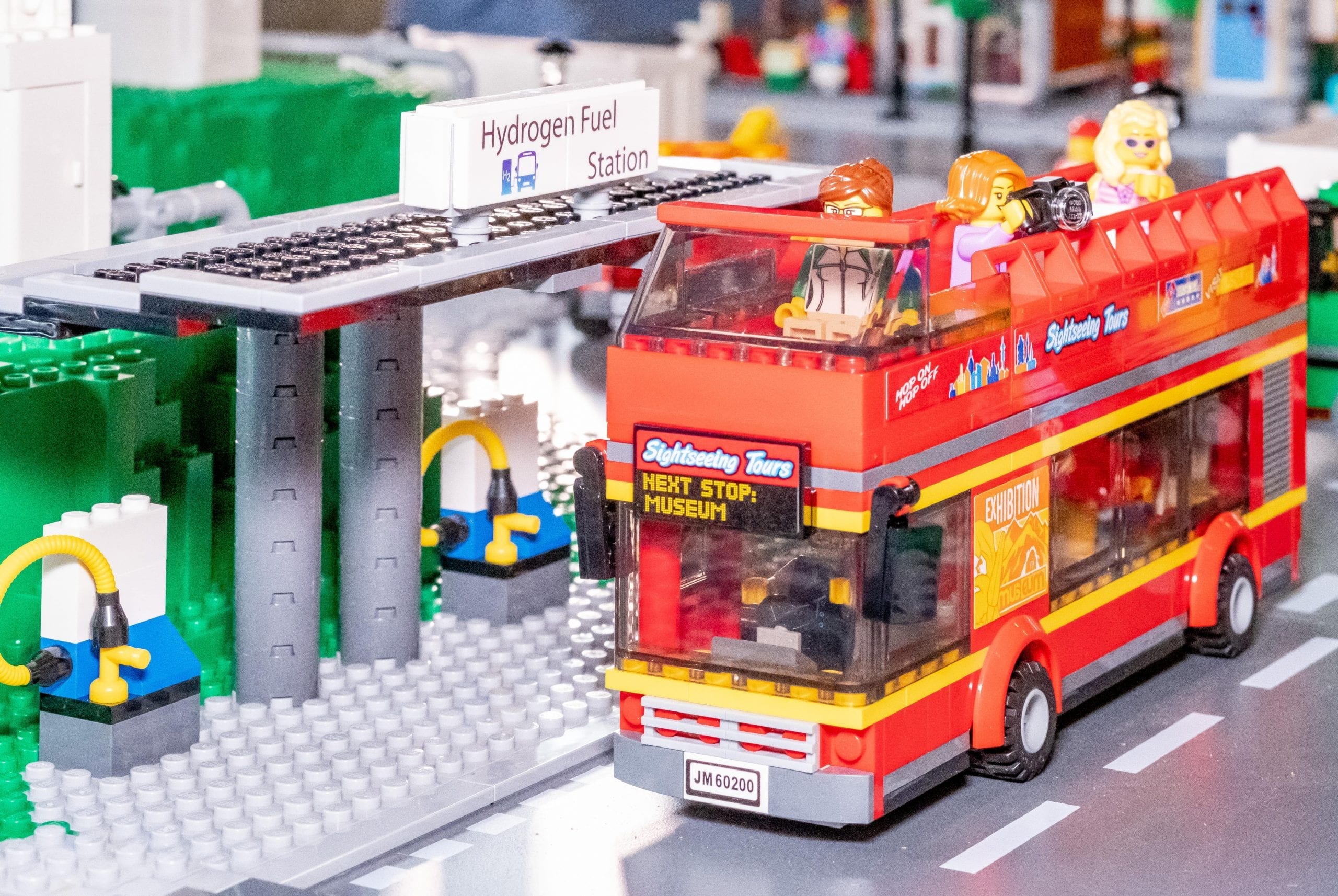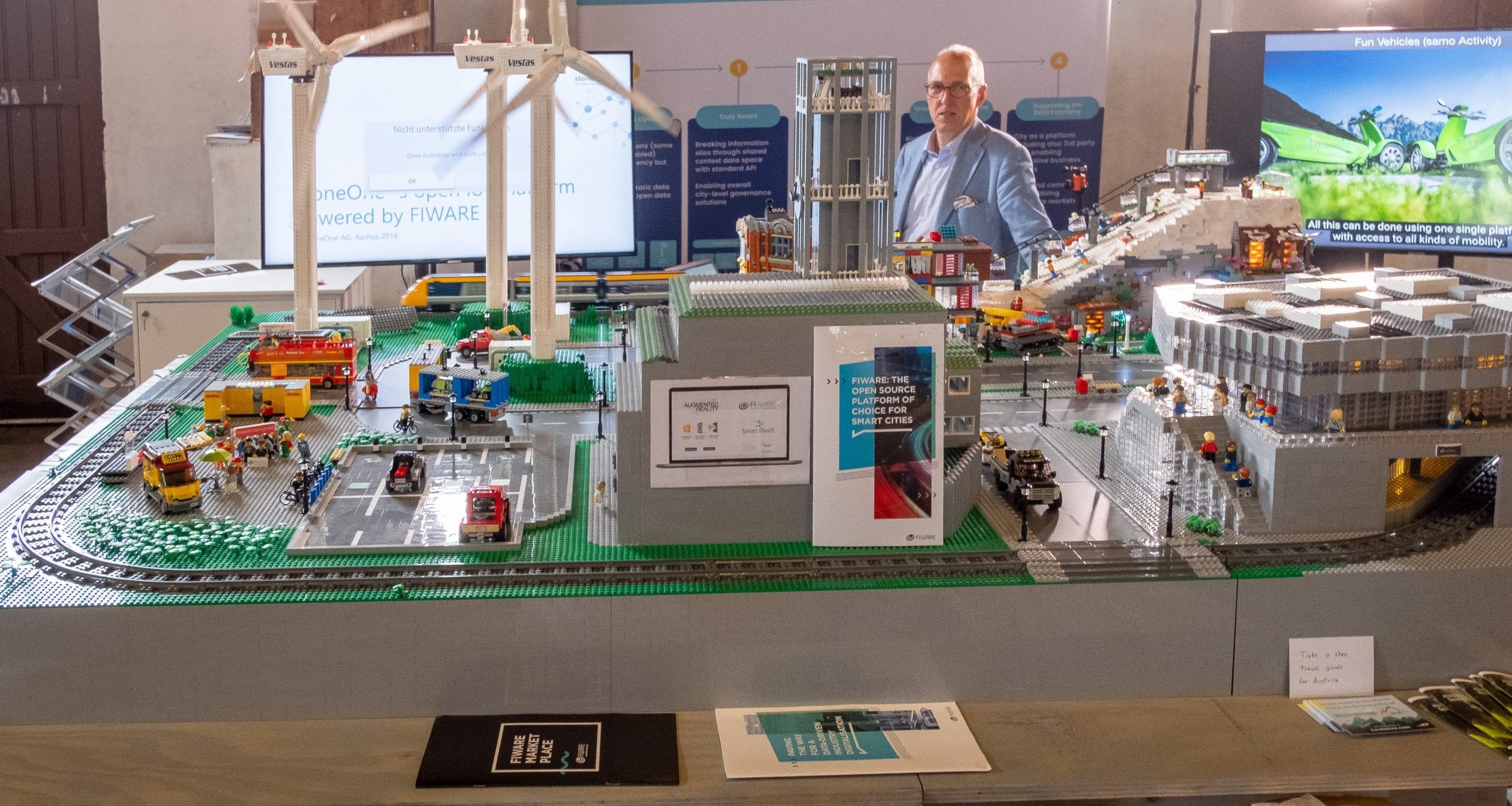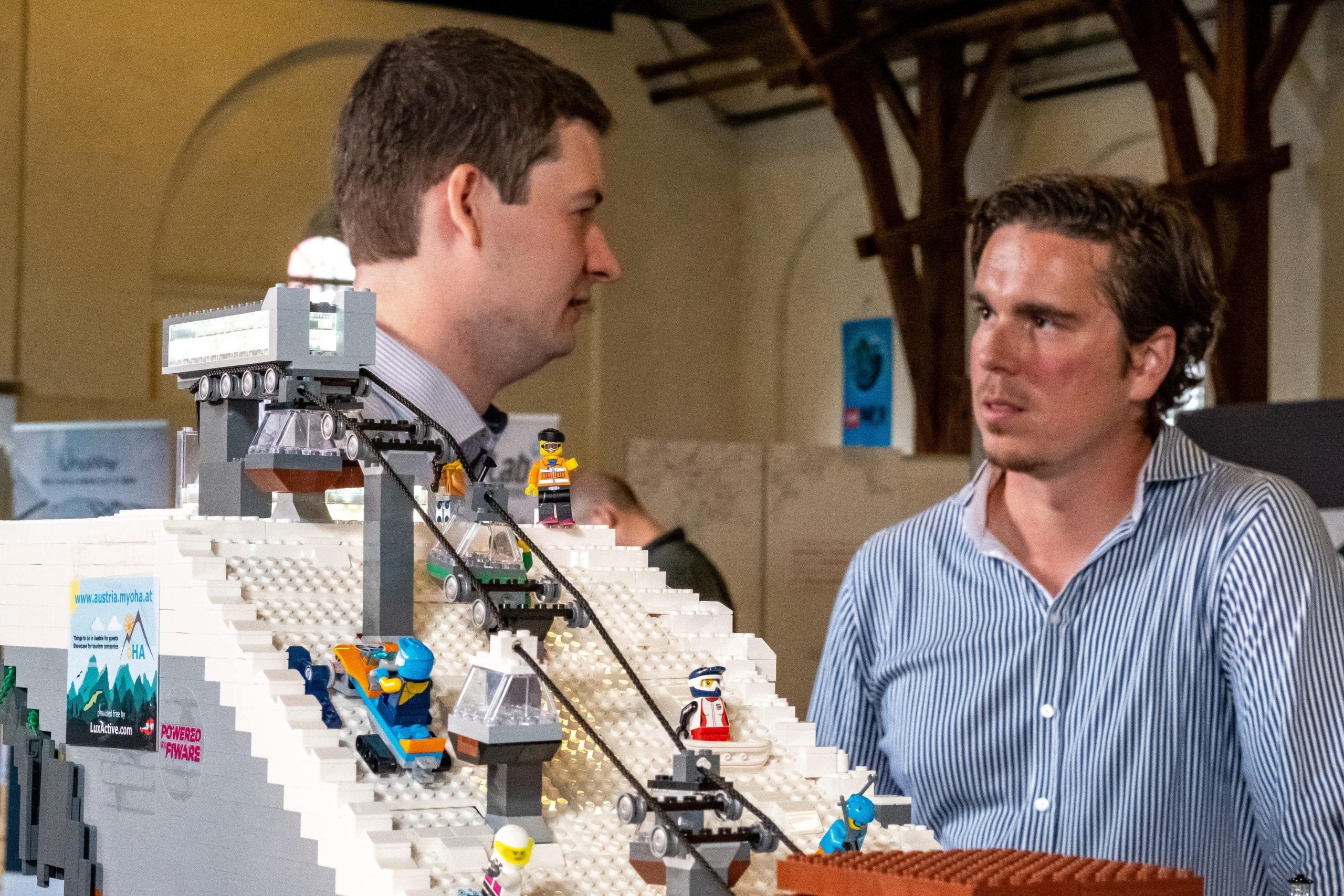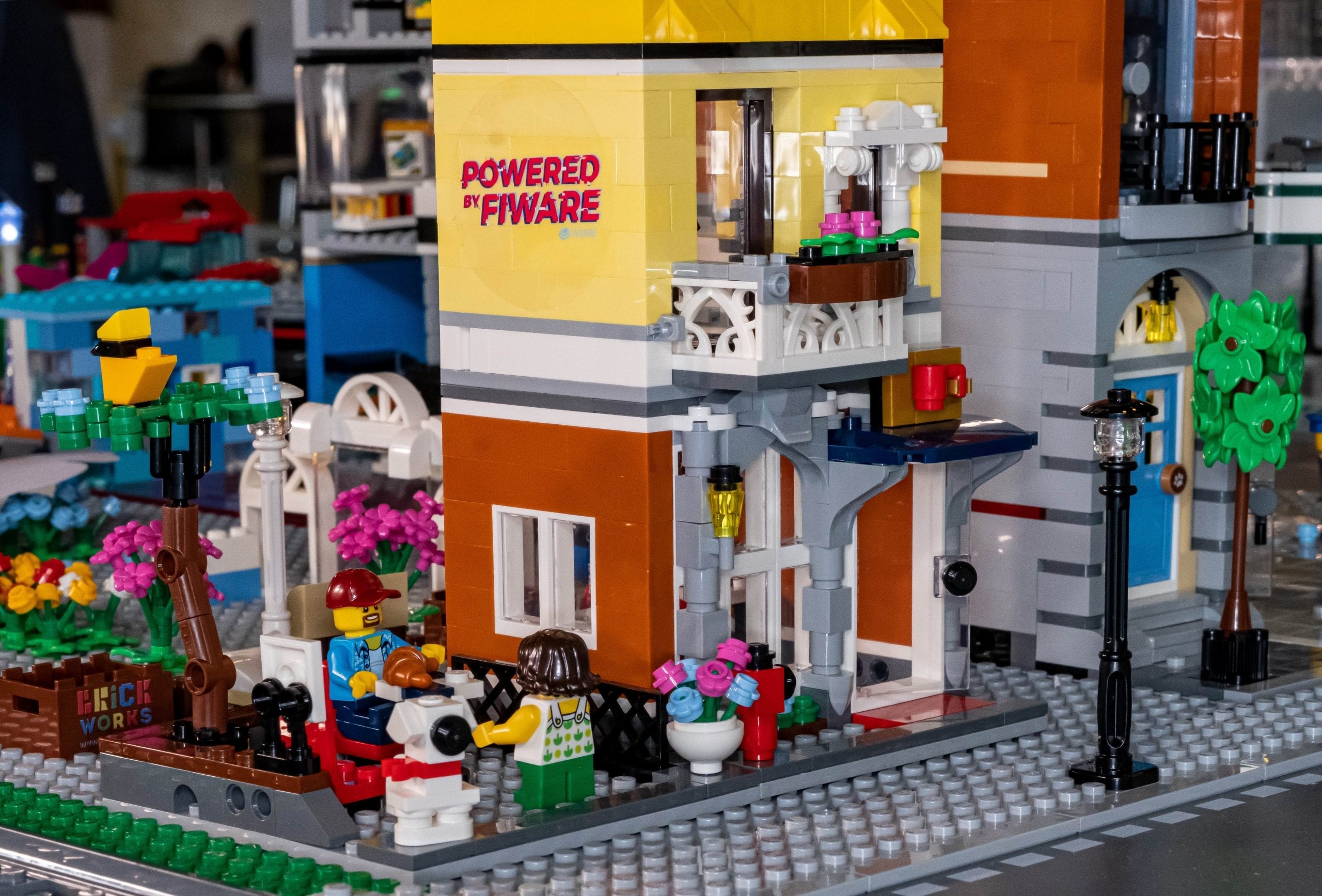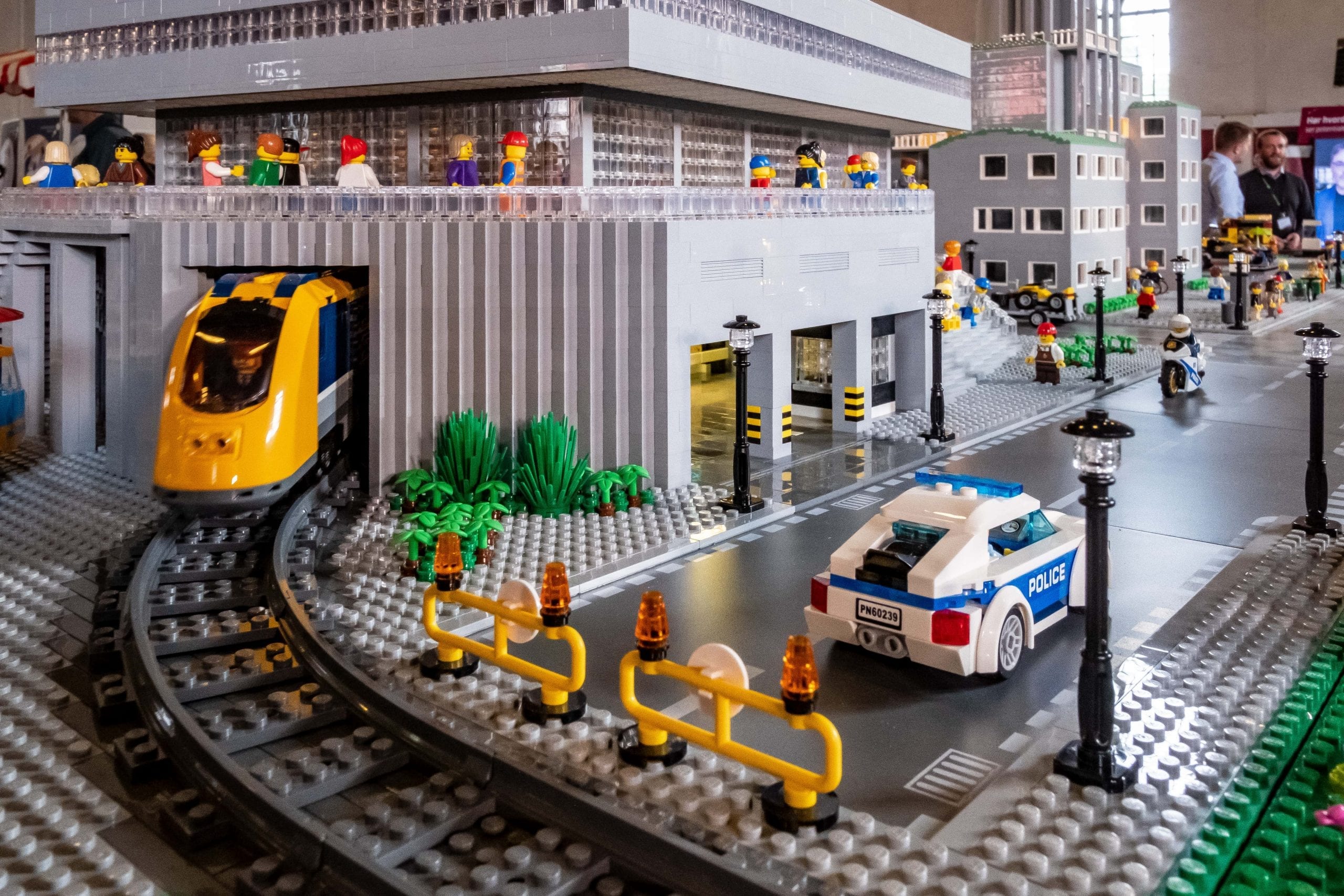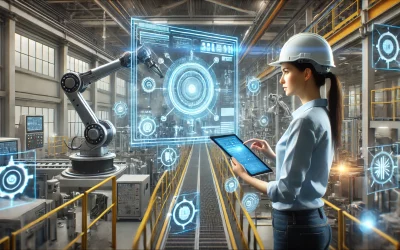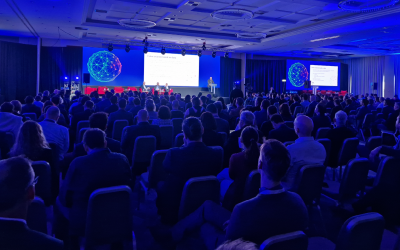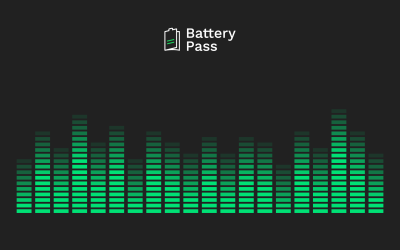From June 18th to 20th the FIWARE Foundation is present at the public expo of IoT Week in Aarhus, Denmark. More than 200 thought leaders from the worlds of research, industry, business, tech, and science attend the 8th edition of the conference where they shed light on the future of technology and its impact on business and life. Conference programme concentrates around IoT and 5G topics and FIWARE does not miss a chance to spotlight an exemplary Smart City. Together with Smart MaaS project, StoneOne AG and LuxActive KG, we present the FIWARE World Lego City.
It shows various domains and their interactions, with a focus on Smart City, Mobility and Energy. In this way, the huge assets and achievements of the FIWARE community over time and their interconnection and integration are demonstrated. Each of six sectors of the model encapsulates different must-have aspects of a Smart City:
SECTOR 1
City Hall: the city as a facilitator of an open governance model and provider of data lake to maintain access and connectivity, as well as guaranteed interoperability based on standards. The city hall of Aarhus as an old and iconic building paving the way to the future – Aarhus today is among the smartest and most innovative cities in Europe, which has been awarded the accolade of the city of culture and innovation on several occasions.
SECTOR 2
Urban Mediaspace
Future-ready public house, library and culture center. The remainder of the building is mainly the underground parking facility, which features an automated lift system and space for 1000 vehicles. The structure features a station and a light rail system with trains running through and under the building. The building is part of an effort to reshape former industrial areas of the Port of Aarhus into residential and commercial areas.
SECTOR 3
Smart House: the Smart House is supported by the IoT sensor hub, which combines and evaluates various data sources and environmental sensors. Intelligent buildings can react autonomously to environmental data. This model shows that air pollution measured on the ground changes road use in urban areas and thus provides incentives for alternative means of transport.
SECTOR 4
Tourist City – Mountain Area: Shuttle, car rental, horse-drawn carriage, paragliding, sleigh or personal chauffeur – these are just some of the free services offered to guests in Werfenweng, a small community in Upper Austria, as a part of the “Samo” initiative – Soft Mobility. This is an example of fully integrated green and sustainable mobility – a role model for smart mobility of the future.
SECTOR 5
Energy: The relation of future Energy production, storage and distribution and future mobility is crucial and a prerequisite for the success of both. This sector represents the concept of a recently funded project in North Germany, which shows how the energy sector can support future green mobility. The energy harvested from the sun and the wind is used to produce large amounts of hydrogen gas (450kg per day) via a PEM electrolyser. The gas is produced, stored and provided to the gas fuel station in order to support a local bus, running between the cities of Niebüll and Husum in Northern Germany.
SECTOR 6
Mobility HuB: The mobility sector demonstrates how various intelligent transport concepts are interlinked. A public train station brings people to the city, then different means of transport and storage are used for the last mile. The mobility Hub features ridesharing pick-up parking, an e-charger, a parcel station, and e-powered autonomous bus, scooter and bicycles. FIWARE members across the world provide feasible and smart solutions for these types of implementation.
FIWARE is powering up Smart Cities with connected mobility. Are you at IoT Week in Aarhus this week? Visit us in Ridehuset to experience it yourself.
Learn more in the FIWARE World Lego City booklet.

